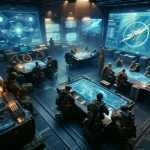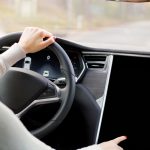Despite a turbulent 2023, Cruise LLC continues to advance its operations. General Motors (GM), its parent company, announced a substantial investment of $850 million into the autonomous vehicle developer, aiming to stabilize and further its growth. This move signals GM’s commitment to Cruise’s vision despite previous financial setbacks. More information about this investment can be found in the official announcement by GM’s chief financial officer, Paul Jacobson.
GM to Review Self-Driving Division
Since its inception, GM has invested over $8 billion into Cruise, yet the returns have been minimal, with the company incurring a $3.48 billion loss in 2023 alone. This significant financial strain hasn’t deterred GM, unlike Ford and Volkswagen, which shut down their autonomous vehicle arm, Argo AI. Jacobson revealed the investment at the Deutsche Bank Global Auto Industry Conference, indicating that it will provide the necessary buffer for GM to conduct a strategic review of Cruise’s future operations.
Cruise encountered numerous challenges in 2023, including a high-profile incident on October 2, when one of its autonomous vehicles dragged a pedestrian after a collision. The incident led the California Department of Motor Vehicles to suspend Cruise’s permits, alleging that the company withheld critical footage. In response, Cruise halted nationwide operations to regain public trust. San Francisco then filed a lawsuit against the California Public Utilities Commission, seeking to reduce the number of robotaxis on the city’s roads.
Cruise Gets Back on the Road in Select Areas
Following a settlement with the pedestrian involved in the October accident, Cruise resumed manual driving operations in Houston and Dallas. The company also began supervised autonomous driving in Phoenix and Dallas, with manual operations in Phoenix starting in April. However, the company has yet to resume operations in its home state of California.
Cruise’s incremental approach to reintroducing its robotaxis involves starting with manual operations, where a human driver controls the vehicle without autonomous systems. This method allows the company to gather valuable road data and create detailed maps. Supervised autonomous driving, which involves a safety driver ready to take over, builds on this data to test autonomous vehicle performance under real-world conditions.
The current phase aims to validate Cruise’s autonomous vehicles against stringent safety and performance standards. The company emphasizes the role of safety drivers in ensuring accurate testing and reliable data collection, crucial for the development of robust autonomous systems.
In the past, Cruise faced various criticisms, particularly regarding safety and transparency. The recent incident in October and subsequent regulatory actions highlight ongoing challenges in gaining public and regulatory trust. While GM’s additional investment showcases strong backing, the strategic review will be decisive in shaping Cruise’s path forward. Comparing this situation to previous industry instances, such as the shutdown of Argo AI, underscores the volatile nature of the autonomous vehicle sector and the importance of sustained financial and strategic support.
As Cruise navigates these complexities, it remains focused on refining its technology and operational strategies. The reintroduction of its services in select cities marks a cautious yet determined effort to rebuild momentum. The effectiveness of this approach will depend on the company’s ability to address regulatory concerns and enhance its safety measures, ensuring a stable foundation for future expansion.
Cruise’s methodical return to public roads reflects a cautious strategy aimed at rebuilding public and regulatory confidence. The phased approach, starting with manual operations, allows the company to gather necessary data and validate its systems. As the company progresses to supervised autonomous driving, the role of safety drivers will be pivotal in ensuring adherence to safety protocols and performance benchmarks. For GM, this substantial investment underscores a commitment to advancing autonomous technology despite financial hurdles.
- GM invests $850 million in Cruise despite previous financial setbacks.
- Cruise resumes manual and supervised autonomous operations in select cities.
- Safety drivers play a crucial role in testing and validating Cruise’s systems.










